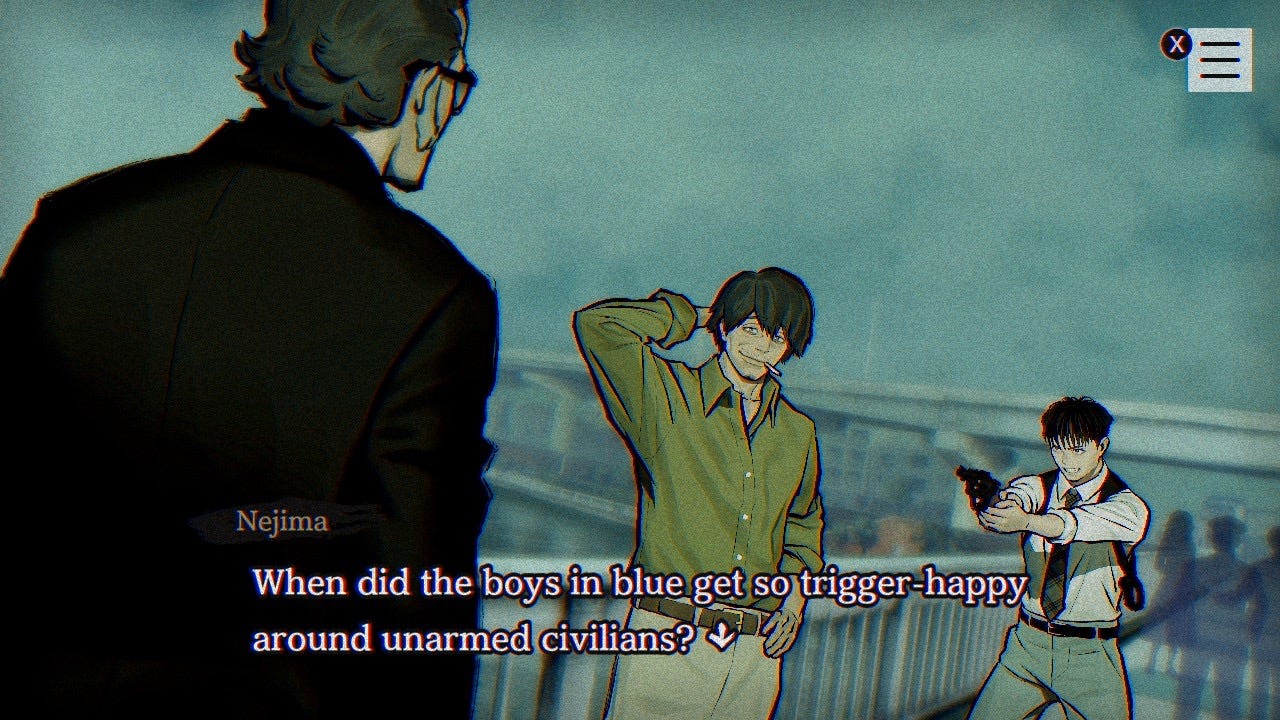Paranormasight: The Seven Mysteries of Honjo
by Square Enix
Released on Nintendo Switch in March 2023
In retrospect, save for during the lowest of my unmedicated lows, I don’t think teen goth me was ever that preoccupied with death. The songs I played on repeat were either about love and longing or replete with apocalyptic doomsaying. I may have adopted an aesthetic of mourning, but all I really wanted was to cherish and be cherished by someone. That desire manifested in often obsessive and unhealthy ways—true to the incel-ish lyrics of most pop songs about romance. But at root was my sincere desire for connection and community, as well as the concordant need to grow the fuck up into a person who could hold space with others in a way that was mutually loving and compassionate.
Now, a quarter of a century later, I think about death all the time. I’m terrified to drive on the highway, though I frequently do to visit family or get to gigs or pick up Jess from work for a dispensary run. My parents are in their mid/late-seventies and in relatively good health, but there are some medical issues that need regular monitoring. My cats both turned nine last month, and while that’s not the scariest number, our vet now classifies them as seniors, and that designation is enough to send my brain spiraling. I fret over what would be worse: me or Jess dying first.
Yet I find comfort in visiting graveyards, in reflecting on just how evanescent our time on this planet is, how quickly we’re all forgotten. And maybe that’s adjacent to how some folks can relax and unwind to a slasher film. I don’t have much of a stomach for horror movies, but I’m discovering I really like horror visual novels.
Paranormasight: The Seven Mysteries of Honjo, fails as a mystery, with its overabundance of plot and characters, as well as its frequent appeals to the supernatural to tie up narrative threads. But it more than makes up for its structural shortcomings with vibes. The game features intertwining story arcs from the perspective of different protagonists: a salaryman, a detective, a teen girl, and a bereaved mother, among others. All carry curse stones, occult weapons capable of killing people and harvesting their souls for a ritual called the Rite of Resurrection. Most of the characters have someone they want to bring back from the dead, and they quickly convince themselves that committing scores of murders is a worthy tradeoff.
The game forces the player to consider whether their own grief could push them to kill if it meant they could once more see a lost loved one. Death is death is death, but its delivery system contextualizes it, steering how we grieve, move forward, or resist. During my first marriage, my then-wife’s grandmother died. Well into her nineties, her body gradually shut down. She was embalmed and placed in an open casket for the funeral. When it was my turn to pay my respects, I touched her folded hands one last time. They felt like plastic. And it somehow made me feel better to understand that this form in front of me was no longer Omama, that there was no her left to suffer or save.



